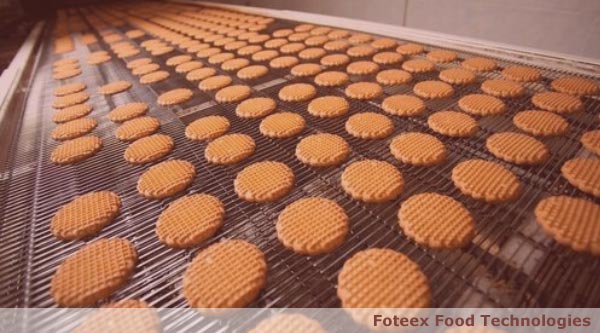Innovation, Advancements
Revolutionizing Biscuit Technology
Biscuit technology refers to the science and engineering involved in the production of biscuits, encompassing ingredient selection, dough formulation, processing, baking, cooling, and packaging. It integrates food chemistry, process automation, and quality control to ensure consistency, texture, taste, and shelf life.
Biscuit technology encompasses the science, engineering, and processes involved in the production of high-quality biscuits. It includes the selection of raw materials, formulation, mixing, shaping, baking, cooling, and packaging, with a strong emphasis on automation, quality control, and sustainability.
It involves the careful selection, handling, and processing of raw materials, along with advanced packaging solutions to maintain freshness and enhance shelf life.
The foundation of biscuit production lies in the careful selection of ingredients. Flours (wheat, multigrain, gluten-free), fats & oils (butter, margarine, vegetable oils), and sweeteners (sugar, honey, artificial alternatives) define the texture and taste. Proteins (egg powder, milk solids, plant-based proteins) enhance structure, while leavening agents (baking powder, soda, ammonium bicarbonate) create light and crispy textures. Functional additives like enzymes, emulsifiers, and preservatives improve consistency, extend shelf life, and maintain product integrity.
Biscuit production follows a structured process:
Modern biscuit manufacturing integrates automated ingredient handling, robotic packaging, and IoT-based monitoring to enhance efficiency and minimize human error. AI-driven quality control detects inconsistencies in shape, size, and texture, ensuring uniformity. Sustainability initiatives, including lightweight packaging, waste reduction, and energy-efficient baking technologies, further optimize production.
Maintaining consistent quality is crucial. This involves moisture content analysis, microbial testing, and allergen monitoring to ensure compliance with food safety standards (FDA, EU, FSSAI). Supply chain transparency, supported by blockchain tracking, ensures traceability from raw material sourcing to the final product.
The industry continues to evolve with trends like high-protein and fiber-enriched biscuits , clean-label formulations, gluten-free and plant-based alternatives, and smart packaging solutions with QR code-enabled traceability. Sustainable packaging materials and energy-efficient processing are also key focuses for eco-friendly production.

Dynamic field driven by advancements in ingredient science, automation, and sustainability. By integrating precision processing, innovative packaging, and smart quality control, manufacturers continue to meet consumer demands for high-quality, safe, and sustainable biscuit products.

Various types of ovens are used in biscuit baking, including tunnel ovens, rotary ovens, and convection ovens. The baking process occurs in multiple stages, starting with initial moisture loss, setting, and final coloring. Temperature is crucial and typically ranges between 180°C and 250°C.

Gluten-free biscuits use alternative flours like rice, oat, and chickpea to meet dietary needs. AI-driven automation enhances quality control, while sustainability efforts focus on energy-efficient ovens and recyclable packaging.
Advanced Biscuit Technology
Call Us: +33 6289 224 69 | +237 65829 6067
Email Us: contact@foteex-tech.com
